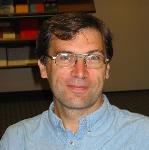


Patrice Koehl
Department of Computer Science
Genome Center
Room 4319, Genome Center, GBSF
451 East Health Sciences Drive
University of California
Davis, CA 95616
Phone: (530) 754 5121
koehl@cs.ucdavis.edu

 |

| Patrice Koehl |
Computational Structural Biology: Winter 2024Modeling Protein StructuresPredicting a protein's structure from its amino acid sequence is a 'holy grail' for the structural biology community. In spite of decades of effort, it remains an extremely difficult problem both because the folded three–dimensional structure of a protein is complicated and because the structure is defined by many degrees of freedom. A protein structure prediction method must explore the space of possible conformations for a protein structure; this space is astronomically large. This problems can be partially bypassed in comparative, or homology modeling, and fold recognition methods, in which the search space is pruned by the assumption that the protein under study adopts a structure that is close to the experimentally determined structure of another homologous protein. De novo or ab initio protein structure prediction methods works by considering the sequence of the protein alone, and either information from physics and chemistry, or data-derived information. All theoretical and computational approaches must be validated by testing. This is usually accomplished by attempts to reproduce the known folds of a number of small proteins. Such tests can be criticized in that they remember the known structures that are being predicted. For truly objective assessment, one needs a system of blind prediction. Such a scheme was devised by John Moult (CARB, University of Maryland Biotechnology Institute, USA), who initiated the CASP meetings.
Lecture Notes
Further Reading
|
| Page last modified 19 September 2024 | http://www.cs.ucdavis.edu/~koehl/ |